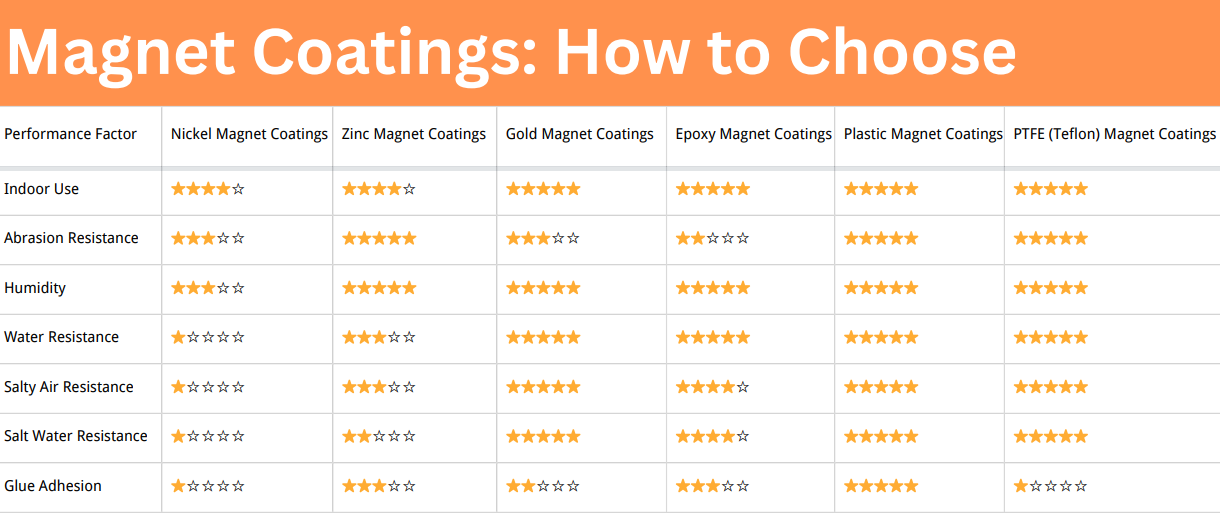Neodymium Magnet--Rare-earth Ingredient, But Non-rare Applications
An Introduction to Neodymium Magnets
Neodymium magnets are made from a powerful rare-earth metal known as neodymium. They are the most commonly used rare-earth magnets in the world. Although their name might make you believe otherwise, neodymium magnets are not made from neodymium alone. They are made from an alloy of neodymium, iron, and boron. Neodymium rare-earth magnet is chemically represented as Nd2Fe14B. Neodymium magnets are the strongest permanent magnets available on the market. These materials are so strong that even their mass is not an obstacle. Small sizes of neodymium magnets can create a large and strong magnetic field compared to other types of permanent magnets. The first neodymium magnet was produced in 1984. This was all thanks to General Motors and Sumitomo Special Metals. General Motors produced neodymium magnets using the bonding method while Sumitomo Special Metals produced them using the sintering method. The discovery of neodymium magnets was mostly fuelled by the need to find a less expensive alternative to samarium cobalt magnets. Today, most of the neodymium magnets commercially available are produced by Chinese manufacturers due to their access to raw materials.
How Neodymium Magnets Are Made
The manufacture of neodymium magnets requires a series of steps. Each of these steps must be followed to the letter to produce high-quality neodymium magnets. Below are the key steps required for making neodymium magnets.  The first step in making neodymium magnets is mixing all the raw materials needed in the correct ratio. The basic raw materials needed are neodymium, boron, and iron. After this, you must melt the mixture of raw materials into a molten liquid state. Cool the molten mixture by placing it on a cold rotating wheel. This process, called strip casting, converts the molten liquid to flakes. The flakes are then put in a chamber where they are broken into smaller sizes by a process known as hydrogen decrepitation. The neodymium mixture goes through another process known as jet milling, which breaks the mixture into more minute sizes. The resulting particle is powdery. It is about 5 microns in diameter. The step that comes after the jet milling process is known as pressing. Here the powder is shaped to a specified shape and size. During the pressing process, a magnetic field is applied to the NdFeB powder. This magnetic field determines the magnetization orientation of the neodymium magnet to be produced. It is important to note that at this stage, the neodymium powder is yet to be magnetized. The next phase of making neodymium magnets involves a process known as isostatic pressing. The previously pressed neodymium material is placed in an isostatic press where it is further compressed and densified to improve its mechanical properties. The sintering step follows the isostatic pressing step. In this step, the neodymium material which was previously wrapped to avoid exposure to oxygen is unwrapped. It is then placed in a sintering oven. This oven converts the material from a pressed powder into a solid block of NdFeB. This process requires a high degree of precision because it determines the internal structure of the material. After sintering the material, you can take it through a process known as machining. This process allows the neodymium solid block to be transformed into a specific shape and size. It usually involves cutting and grinding. Machining is a time-consuming process. Coating the magnet is an optional step. However, it is advised that you do not skip it. In this step, you can coat the neodymium block with materials that can improve its durability and strength. The last step in making neodymium magnets is the magnetizing step. Here the NdFeB block is placed in a magnetizing coil. The magnet is magnetized in the direction predetermined in the pressing step. Now, you have your neodymium magnet.
The first step in making neodymium magnets is mixing all the raw materials needed in the correct ratio. The basic raw materials needed are neodymium, boron, and iron. After this, you must melt the mixture of raw materials into a molten liquid state. Cool the molten mixture by placing it on a cold rotating wheel. This process, called strip casting, converts the molten liquid to flakes. The flakes are then put in a chamber where they are broken into smaller sizes by a process known as hydrogen decrepitation. The neodymium mixture goes through another process known as jet milling, which breaks the mixture into more minute sizes. The resulting particle is powdery. It is about 5 microns in diameter. The step that comes after the jet milling process is known as pressing. Here the powder is shaped to a specified shape and size. During the pressing process, a magnetic field is applied to the NdFeB powder. This magnetic field determines the magnetization orientation of the neodymium magnet to be produced. It is important to note that at this stage, the neodymium powder is yet to be magnetized. The next phase of making neodymium magnets involves a process known as isostatic pressing. The previously pressed neodymium material is placed in an isostatic press where it is further compressed and densified to improve its mechanical properties. The sintering step follows the isostatic pressing step. In this step, the neodymium material which was previously wrapped to avoid exposure to oxygen is unwrapped. It is then placed in a sintering oven. This oven converts the material from a pressed powder into a solid block of NdFeB. This process requires a high degree of precision because it determines the internal structure of the material. After sintering the material, you can take it through a process known as machining. This process allows the neodymium solid block to be transformed into a specific shape and size. It usually involves cutting and grinding. Machining is a time-consuming process. Coating the magnet is an optional step. However, it is advised that you do not skip it. In this step, you can coat the neodymium block with materials that can improve its durability and strength. The last step in making neodymium magnets is the magnetizing step. Here the NdFeB block is placed in a magnetizing coil. The magnet is magnetized in the direction predetermined in the pressing step. Now, you have your neodymium magnet.
Applications of Neodymium Magnets
Levitation Devices
Neodymium magnets are often used in making levitation devices in the engineering industry. Levitation devices lift ferrous objects due to the high magnetic strength of the NdFeB magnets used in making them. The neodymium magnets provide the magnetic force that opposes the gravitational force that tends to pull the object toward the center of the Earth's crust.
Aerospace
Neodymium magnets are widely used in the aerospace industry thanks to their durability and high magnetic strength. They are used for satellite communications, fuel pumps, and sonar systems.
 AMS-02 on the truss, as viewed during an Expedition 50 spacewalk. Source: Wikipedia
AMS-02 on the truss, as viewed during an Expedition 50 spacewalk. Source: Wikipedia
Medicine
Neodymium magnets are used in magnetic resonance imaging. MRIs are used to examine the internal organs of the body. NdFeB magnets provide the high magnetic field needed to make MRI scanners function. Thus, they are used in medicine.
Defense
Neodymium magnets are used for defense in the military. They are used in making missile guidance systems. In addition, they are used to make important military aircraft components.
Smart Phones
Neodymium rare-earth magnets are used in making smartphone components. They are used in making mobile phone receivers and mobile phone speakers. These permanent magnets are also used in making headsets, earbuds, and smartphone cameras. This is due to their high magnetic strength.
Energy Industry
Neodymium magnets are used to generate electricity. They are used in making motors and generators. In motors, NdFeB rare-earth magnets convert electrical energy to mechanical energy while in generators they convert mechanical energy to electrical energy.
Conclusion
Neodymium magnets are highly versatile permanent magnets that have been used in many different applications, including aerospace, medicine, smartphones the energy industry, etc. Studies show that these rare-earth magnets have a lot to offer in the energy industry. Thank you for reading and we hope it can help you to have a better understanding of the applications of magnets. If you want to learn more, we would like to advise you to Stanford Magnets for more information.














